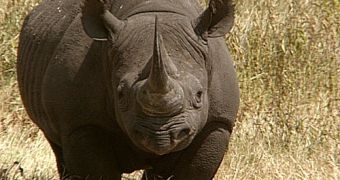News from Kenya informs us that, as a result of constant efforts made by the Lewa Wildlife Conservancy, the black rhinos population looked after by this green-oriented non-profit group witnessed such a boost in its population, that rangers now have to move some of the animals in order to avoid fights between them.
For those unaware, black rhinos are presently listed as a critically endangered species, which is why this rather unexpected boost in their overall headcount comes as good news indeed.
Mongabay informs us that the region the Lewa Wildlife Conservancy presently owns amounts to about 25,000 hectares (62,000 acres) of land, and that the 74 black rhinos presently inhabiting this perimeter are now ever more often getting into fights over territory and females.
According to the same source, ever since this organization took control of this portion of land in Kenya and debuted its green-oriented working agenda, only 5 rhinos were killed by poachers in a period of time of roughly 3 decades.
Truth be told, given the security measures set in place for this wildlife sanctuary, this hardly comes as a surprise.
Thus, Mike Watson, the CEO of Lewa Wildlife Conservancy, explains how, “The most important factor is to have a highly organized, professional and committed security force. Lewa's team protects over 60,000 acres, divided into 18 patrol blocks that are monitored 24 hours a day, 365 days a year.”
Furthermore, “If they aren't seen after four days, we begin an aerial search of the conservancy that doesn't end until we find them.”
Given the fact that most other wildlife sanctuaries have as of lately seemed rather hopeless when it comes to confronting poachers and keeping the animals in their care out of their way, it seems to us that, as far as the efficiency of global conservation projects is concerned, the progress made by the Lewa Wildlife Conservancy is noteworthy to say the least.

 14 DAY TRIAL //
14 DAY TRIAL //